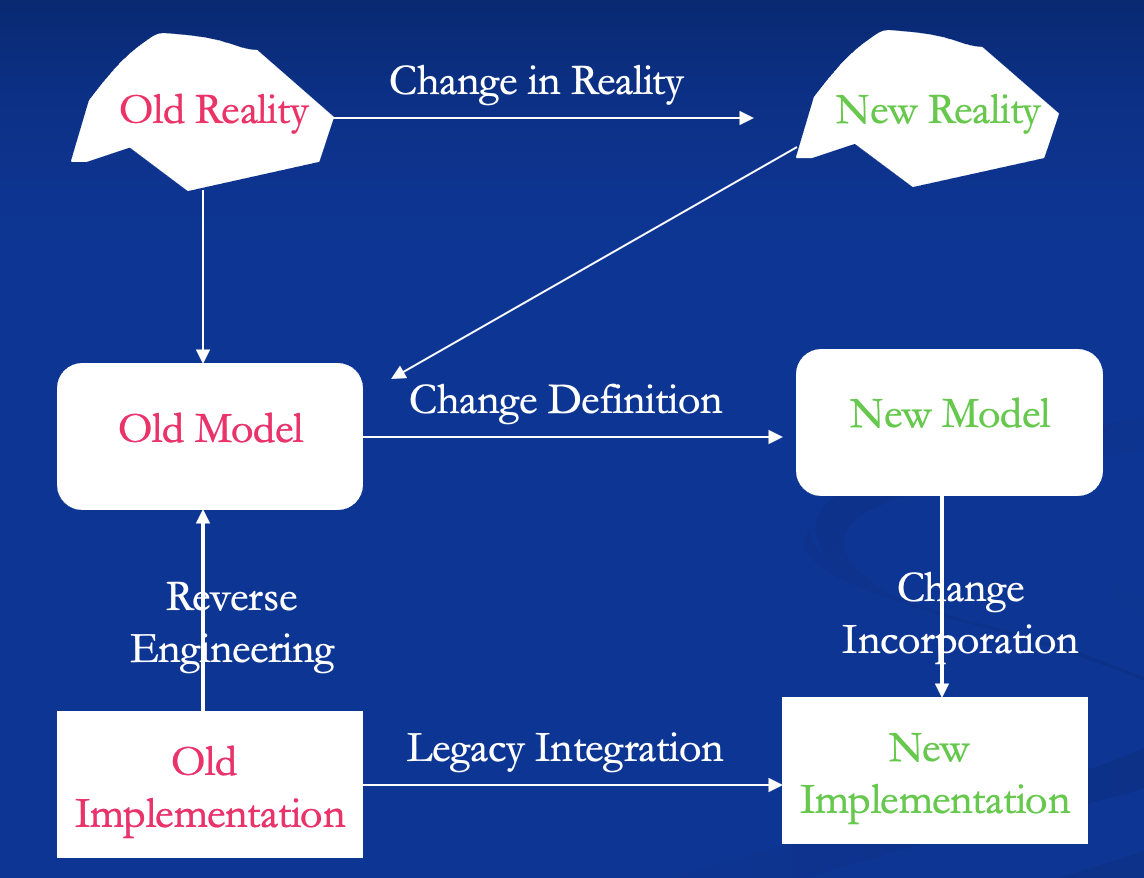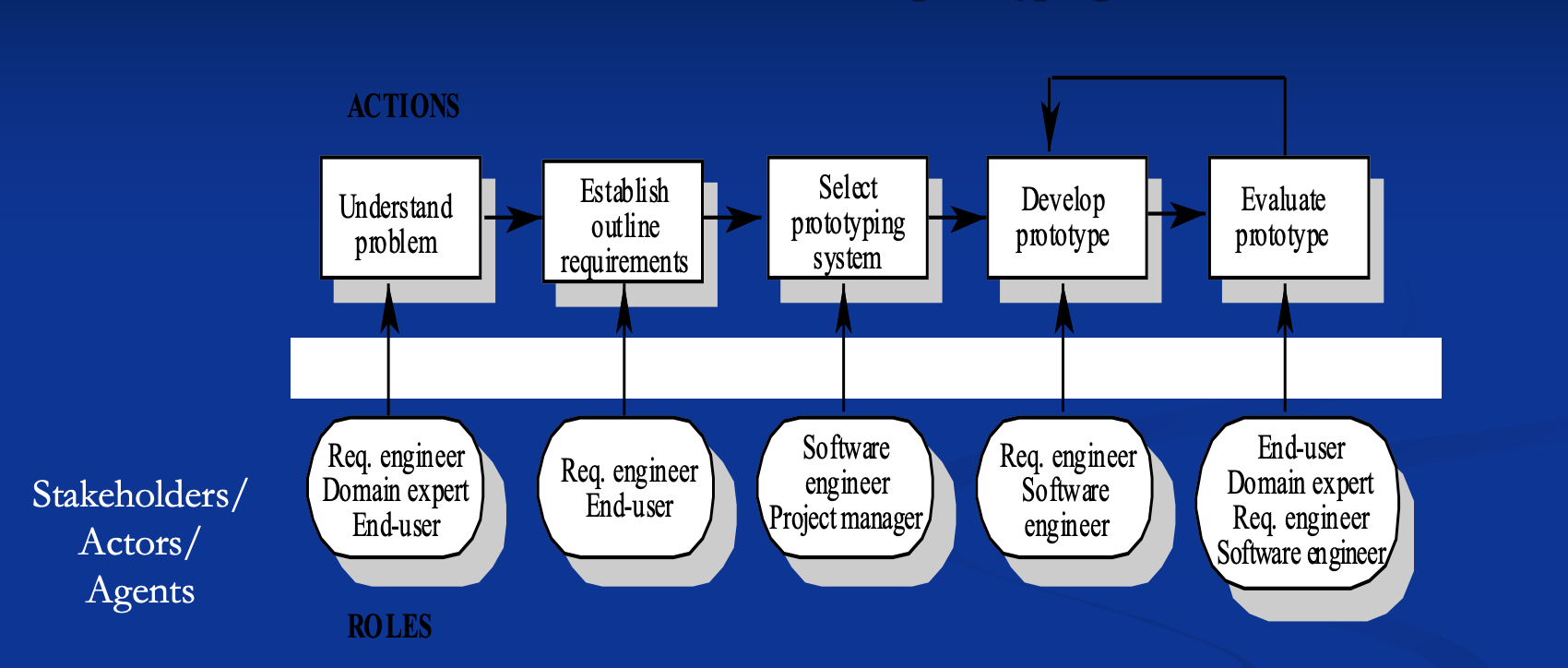SE 4351 Requirements Engineering (PROCESSES)
1/16
There's no tags or description
Looks like no tags are added yet.
Name | Mastery | Learn | Test | Matching | Spaced |
|---|
No study sessions yet.
17 Terms
What is a Process?
Given input, transforms it into output
Consist of a set of activities
process descriptions are also called “Process Specifications”
The Basic RE: Evolution Process
Evolution is inevitable - Traceability is more than a virtue.
forward/backward traceability

What are the three fundamental activities?
Understand
Describe (formally)
attain an agreement on, the problem
Basic Philosophy: Agile Methods
Reduce Communication Barriers
Reduce document heavy approach
Have faith in people
Respond to the customer
What are Agile Methods Weaknesses?:
Relies on programmer memories
code can be hard to maintain
Relies on oral communication
Assumes single customer representatives
Only short-term planning
What is Variability in the RE Process?
RE processes vary radically from one organisation to another (Many Variety …and Evolution is inevitable)
There is therefore no ‘ideal’ requirements engineering process
What factors contribute to Variability?
Technical Maturity
Disciplinary involvement
Organizational Culture
Application Domain
What is the average cost ratio of requirements to maintenance?
14:1
Difference between Basic framework and Spiral Model?
Basic Framework is user-centered and focuses on user requirements/needs and Spiral Model is stakeholder-centered and is flexible with negotiations allowing to adapt to changing requirements.
What factors is RE process dominated by?
Human, Social & Organizational
Forward traceability is:
For every/all requirements there must be an existing design component
Backward traceability is:
For every existing design component, there must be a requirement
True/False: PROBLEM = TO-BE - AS-IS?
FALSE
True/False: AS-IS + PROBLEM = TO-BE?
FALSE

Would you use the RAD (Role Actor Diagram) process?
Depends it is not good for big/complex projects but is good for small projects
TO-BE:
Future world with as little problems as possible
AS-IS:
Current world with problems